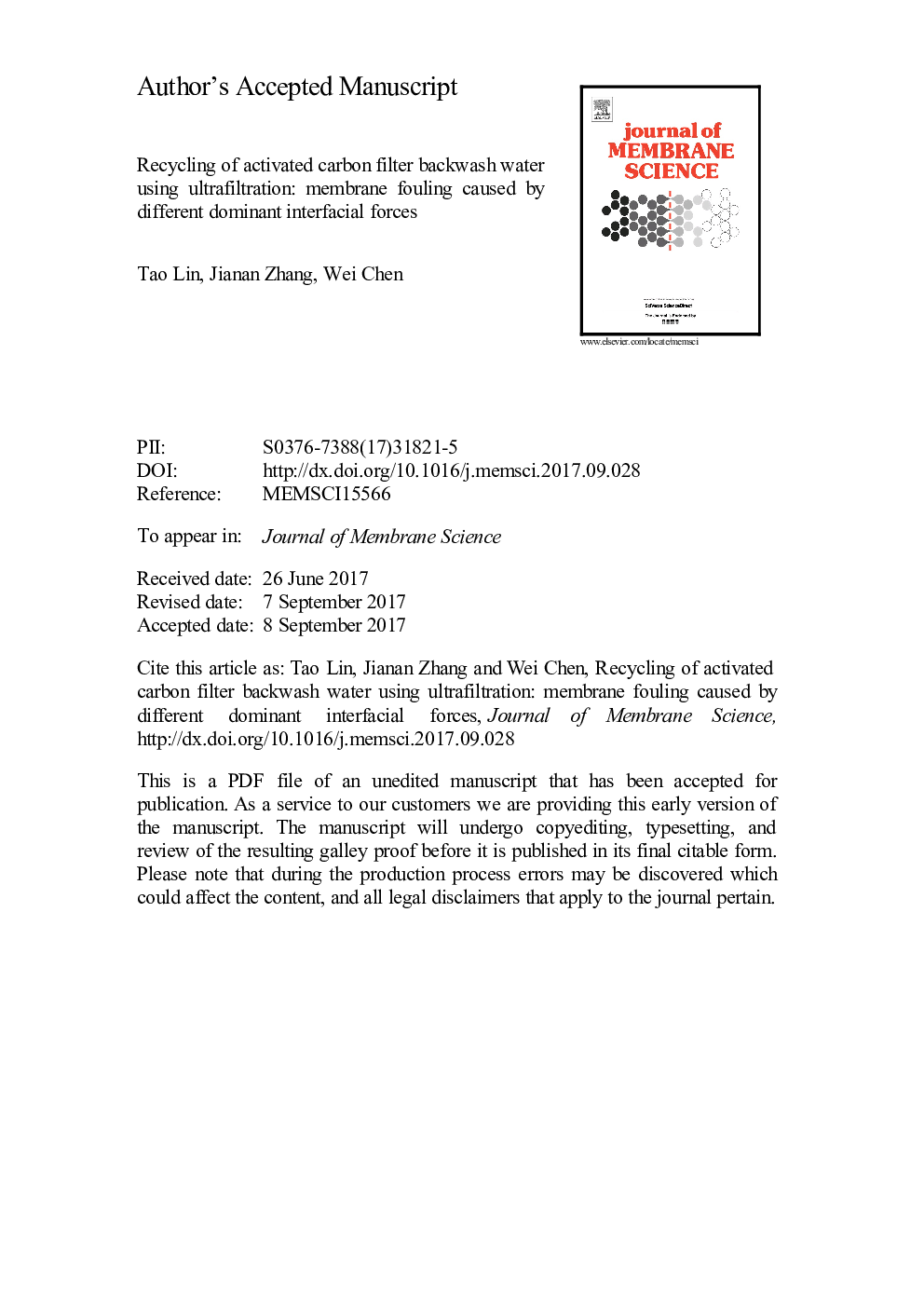| کد مقاله | کد نشریه | سال انتشار | مقاله انگلیسی | نسخه تمام متن |
|---|---|---|---|---|
| 4988417 | 1455955 | 2017 | 42 صفحه PDF | دانلود رایگان |
عنوان انگلیسی مقاله ISI
Recycling of activated carbon filter backwash water using ultrafiltration: Membrane fouling caused by different dominant interfacial forces
ترجمه فارسی عنوان
بازیافت کربن فعال فیلتر کربن با استفاده از اولترافیلتراسیون: فوران غشاء ناشی از نیروهای متقاطع مختلف
دانلود مقاله + سفارش ترجمه
دانلود مقاله ISI انگلیسی
رایگان برای ایرانیان
کلمات کلیدی
آب کربن فعال فیلتر ضد آب، نیروی متقابل، پیش سازه، فوق العاده تصفیه فوران غشاء،
موضوعات مرتبط
مهندسی و علوم پایه
مهندسی شیمی
تصفیه و جداسازی
چکیده انگلیسی
The reuse of activated carbon filter backwash water was performed using an ultrafiltration (UF) system and the membrane fouling mechanism was investigated using a model involving XDLVO theory and hydrodynamic interaction. Pretreatment by micro-flocculation/sedimentation removed most particulate pollutants; thus, residual organic colloids determined the details of the UF membrane fouling. The membrane fouling was divided into two periods. Membrane fouling in the initial period was determined by interfacial forces between the membrane and colloids. The calculated interfacial forces showed that permeation drag (PD) force dominated the total interfacial force at long-range, while London-van der Waals and short-range Lewis acid-base (AB) forces governed membrane fouling at short-range (< 3Â nm). The electrostatic double layer force, reaching its energy peak at around 10Â nm, favored mitigation of membrane fouling. The initial membrane fouling could be alleviated by reducing the PD force, which was mainly associated with permeate flux. In the second membrane fouling period, a cake layer formed mostly of hydrophobic colloids retained at the membrane surface. The increasing AB force contributed mainly to the interfacial forces responsible for membrane fouling at short-range, greatly aggravating membrane fouling. The pre-ozonation of the UF influent was involved in mitigating membrane fouling in the second period. Pre-ozonation enhanced the hydrophilic properties of both cake layer and organic colloids, which clearly decreased the AB force. The pre-ozonation also narrowed the colloid size range and decreased the PD force. The use of interval pre-ozonation during the filtration process was a promising way to alleviate membrane fouling, and involved a chemical cleaning cycle extending from 15 to 18 days.
ناشر
Database: Elsevier - ScienceDirect (ساینس دایرکت)
Journal: Journal of Membrane Science - Volume 544, 15 December 2017, Pages 174-185
Journal: Journal of Membrane Science - Volume 544, 15 December 2017, Pages 174-185
نویسندگان
Tao Lin, Jianan Zhang, Wei Chen,
